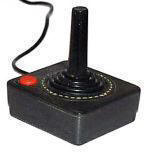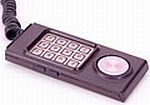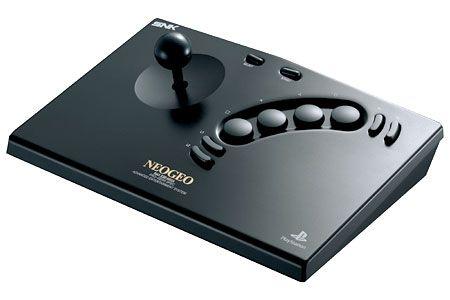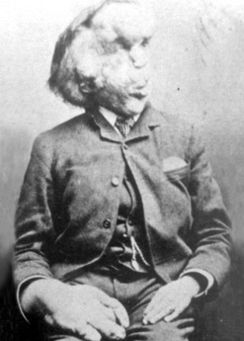Getting poll results. Please wait...
A video game or console can be great, but without the right input device who really cares? Playing a bit off of
Tan's article on the Saitek Cyborg 3D Gold USB,
The RFG Pulse wants your opinion on the
Best Digital Controller. But first a little history might be in order.
Digital controller technology was the primary method utilized until about the mid 1990's. To put it simply, this was basically an On-Off technology: push a button, directional button or joystick and a single response was transmitted to the console to execute an action. The amount of pressure applied was not a factor, as it is in today's analog controllers.
When considering your vote, take into account innovation, control, feel, overall performance and usability. There were many, many more digital controllers released who did not make the list that you see in this poll. The most notable missing is the 'pistol' controller for the
Bally Professional Arcade - a truly sensitive and responsive controller for its time, but not considered a mainstream system by most gamers.
There are some heavy weights in this poll. Who will win?
Vote and add a
comment to state your case!
Atari 2600 - Joystick

Simple, elegant and easy to use. A true classic.
| Mattel Intellivision

Innovative at the time, allowing complex user input. The 'circle' pad allowed quick directional input.
| Nintendo NES

The introduction of the first gamepad. The D-Pad exists to this day in our modern controllers.
|
Sega Genesis

Excellent design and fits like a comfortable pair of shoes.
| Nintendo SNES

Slightly small, dog bone design, but introduced us to the 'shoulder' buttons still utilized today.
| SNK Neo Geo AES

The mother of all controllers. This true arcade stick was / is a classic with excellent control. |
Comments are always welcomed! Let's hear from you!
[img width=300 align=right]http://www.rfgeneration.com/images/hardware/U-033/bf/U-033-H-00010-A.jpg[/img]The year was 1987 and the video gaming world was ruled by the
Nintendo Famicom, followed by a somewhat strong competitor in the
Sega Master System.
Atari was still a big player at the time, though their recent releases of their
5200 and
7800 systems could not effectively compete with these newer breeds. A company called
Worlds of Wonder decided to enter into the fray with the release of the
Action Max. Though they had already established considerable ties to the gaming community during the mid 1980s, this system was already dead on arrival when it hit the store shelves.
Worlds of Wonder was founded by a group of former
Atari programmers. Being the original distributor of the
Nintendo NES in the United States, they had strong ties to both technological and manufacturing resources. The actions and reasoning behind the development of the
Action Max is unknown. Coming off the video game crash of 1984, many hardware manufacturers went bankrupt and new developers shied away from this video game console field (
NEC being the main exception). Obviously, this did not deter their efforts in creating a new system built upon possibly the most media formats ever devised – the
VHS video cassette tapes.
It is important to first describe how this system works, rather than to describe its physical and technical features as is the norm. The
Action Max is one of the few video game consoles that are not able to display graphics on its own – a
VCR is required for game play (not included). The system works by attaching directly to a
VCR. The
VCR in turn transmits the video signal to your television. Sound is delivered through the
Action Max system itself – there is no option for external output. The included Light Sensor must be plugged into the console, then 'connected' to the television screen via a suction cup. As mentioned before, games are
VCR tapes. Pop in the game into your
VCR, power up the
Action Max and plug in the controller (light gun) and be prepared to fire away. All games (a total of 5 were released) are the same, whether it is shooting a ghost or a submarine, these are simple point and shoot affairs. What's worse, there is no change/reaction to anything being displayed to you when you score a 'hit' – a small noise is emitted from the console and the score counter increases. There is no way to win or lose at these games – just high score bragging rights among your friends (better right them down since the
Action Max doesn’t keep track of them at all for you). Also, remember that this is a dumb VCR tape – replay value is -0-. The tape itself cannot change, and playing a new game repeats the same positions and appearances of all foes. Memorize where they will appear, maximize your score.
[img width=300 align=left]http://www.rfgeneration.com/images/hardware/U-033/bb/U-033-H-00010-A.jpg[/img]Now that the basic concept of the working of the
Action Max has been described, let’s look at the console itself. The system itself is rather nondescript. The dark grey exterior casing is shaped and has the size of an aluminum container used for the family sized portion of a Stouffer’s pre-made meatloaf dinner. Come to think about it, the weight is about the same as well (about 2 lbs.). A white elongated "S" shaped plastic wedge breaks up the dull, solid colored top facing. Residing here is a combination of three toggle switches and two dials that control the difficulty level and the number of players (supported two player mode). The player's score was displayed here as well in classic, old-school red LED numbering.
The front of the unit has jacks for a headphone and the controller, along with a toggle switch to mute the volume. The back of the unit is more of the same – a jack for the power (external, not included but the unit can run off of C batteries), two mini-RCA jacks for the light sensors. The controller is a more of the same - a simple dark grey light gun that feels rather fragile and does not have any girth to it, though it does fit OK in one’s hand. 'Shooting' the 'gun' emits a rather satisfying mechanical clicking noise – nothing like cap guns of the era, but still, with this console, it is all about the small pleasures.
Worlds of Wonder entered into bankruptcy in 1988, less than a year after the release of the
Action Max. The company is more noted for the development and production of various children’s product, including the
Teddy Ruxpin interactive bear. Many of the associates of
Worlds of Wonder went on to join
Nintendo in various capacities.
[img width=150 align=right]http://www.rfgeneration.com/images/games/U-033/bf/U-033-S-00040-A.jpg.jpg[/img]The
Action Max was a short-lived system, and rightly so. Compared to it's contemporaries, the static game play and poorly acted video
VCR games did not stand a chance. Think of the worst
Sega CD FMV game released and multiple your disdain for it by 1000% - that would not accurately define an experience with the
Action Max, but it would come close.
This system is only recommended for collectors – there is no value here at all for among gamers of any level. The unit is light, but the box is HUGE for this system – the packing alone is around 10" in depth. I am not sure why the packaging was so extensive for this system – perhaps the marketing gurus at
Worlds of Wonder thought that 'bigger was better' when seen on a store shelve. It is certainly not needed for what it was designed to protect. Though not seen a great deal for sale, these systems are pretty cheap to acquire through eBay. Expect to pay no more than $50 USD for a complete system. Games are not too rare either – they will run you around $10 USD a piece.
The link to the full review of this system (including ratings, pictures and video):
http://www.videogameconso...ry.com/pg80-actionmax.htmThanks all.
Terry (a.k.a. Marriott_Guy)
The Video Game Console Library
http://www.videogameconsolelibrary.com
[img width=300 align=right]http://www.rfgeneration.com/images/hardware/U-083/bf/U-083-H-00011-A.jpg[/img]Prior to releasing their revolutionary controller with the debut of
Wii,
Nintendo had previously experimented with this in 1995 with the release of
Laserbirdie, a golf game simulator for the
Super Famicom. Though
Nintendo does own the bragging rights to be the first to actually implement motion-sensing technology into a game, the
Wii can not lay the same claim in regards to a console. That honor belongs to
SSD Company Limited with their release in 2004 of the
XaviX Interactive System (
XaviXPORT).
The
XaviXPORT was the first home video game console that fully utilized and required the use of full, wireless motion-sensing controllers. No games are included with the system - game packs, all sport/fitness related, are sold separately that include the game and a specialized controller shaped like the athletic equipment used in the respective game (i.e. golf club or tennis racquet). Besides being the first console devoted entirely to this new technology, the
XaviXPORT has a number of other unique features - some good, others not so much.
The
XaviXPORT makes the
Sony Playstation 2 slimline model look like a behemoth. This system has to be one of the smallest consoles ever made measuring 1.0"¯ H x 7.0"¯ W x 5.5"¯ D and weighs less than 1 pound. The front of the simple satin-silver casing features two (2) push buttons to the left (power and reset) with the infrared receiver on the right. A stylish, clean
XaviX logo is featured front and center. The top of the system is more of the same - straight, easy to use features (four (4) up/down buttons flanked by an enlarged Rest and Enter button). The cool-olive colored game cartridge slot also resides here. Standard AV connection jacks, power and an AV Out port adorn the back of the system. This is as simple as it gets. The
XaviXPORT hardware mirrors the simplicity of the main console design.
[img width=300 align=left]http://www.rfgeneration.com/images/hardware/U-083/bb/U-083-H-00011-A.jpg[/img]The
XaviXPORT system, contrary to the innovations delivered in their game interface devices, harkened back to a method used in the 1970's of delivering gaming applications and processor in one medium - through the cartridge itself. I am not sure of the exact specs of the internal components of the
XaviXPORT (though I have read is of an 8-bit variety), though it is safe to say that some basic processors are included to process sound and video output along with the software bridge required to communicate with the cartridges. The premise here, as it was back with Pong-On-A-Chip technology (
PC-50x family), was to include the processing power onto the game cartridge to avoid having to keep upgrading the central system every time a leap in technology occurred. In theory, this is an excellent approach to keeping the games up to date and providing the gamer the best experience. Now to the important question - what about the games?
Interactive sport and fitness games are the only genre for this system. A total of eight ( 8 ) applications have been released for the
XaviXPORT from golf to baseball to fishing to boxing. I would have to say the graphics are somewhat similar to the
3DO - obviously not that great considering the year of its release. The games are fun though - physically demanding you to get off of your couch and participate. Correct positioning of the system is paramount for the optimal enjoyment because the game peripherals range does not seem to be that great (maybe 15-20 feet or so). If you are looking for a good workout, you will not be disappointed.
[img width=300 align=right]http://videogamecollectors.com/albums/Marriott_Guy_Games/2004_Xavix_Game_Collection_001.jpg[/img]Overall, the
XaviXPORT is truly a first among video game consoles.
SSD Company Limited fully embraced wireless, motion-sensing technology and ran with it. Having to compete in the marketplace with the
Sony Playstation 2 and
Microsoft Xbox did not help their cause, nor did the lack of their brand name recognition. I rather view this system like
Worlds of Wonder release of the
Action Max - intriguing technology at the time, but too much competition to overcome.
The
XaviXPORT is still being sold in some select stores (both online and retail). A brand new system costs $80 USD, with games running approximately $50 USD (some higher). This is a recommended purchase for the gamer that likes to get a physical workout and fun game experience but is not necessarily addicted to cutting edge technology. This is also a recommended purchase for the console collector due to the place in history that the
XaviXPORT will have and the small library of readily available for purchase games.
As I was writing my next System Overview article, I found myself asking the question "What in the world were they thinking?" when looking at some of the console designs in my Room of Doom. Some are very unique and others are just plain elephant-man ugly. With that image in mind, who will take the home coveted
Joseph Merrick Award for
worst-looking video game console? The contenders:
Magnavox Odyssey 2
 Just what I need - 15 million
keys to play a game.
| Amstrad GX 4000

Space-age design or just a cheap rip-off
of the Land Speeder from Star Wars?
| 
Cast Your Vote!!
|
Atari 5200

Hmm... make it bigger and
they will love it - NOT.
| Gakken Compact Vision

What in the heck am I supposed
to do with those funky handles?
|
Nintendo GameCube

Simple design or
designed by simpletons?
|
RCA Studio 2

Brutal, just plain brutal.
|
Bally Professional Arcade

Bally should have stuck
to designing arcade machines.
| Pioneer LaserActive

"Customer needs assistance in aisle 3.
Fork lift will be required." |
[img width=300 align=right]http://www.videogameconsolelibrary.com/images/2000s/01_Panasonic_Q/01_Panasonic_Q_Front.jpg[/img]During the development of their
GameCube gaming system,
Nintendo partnered with
Matsushita-owned
Panasonic to manufacture the disc drive for their console. As part of this agreement, a license was issued to
Panasonic to be able to utilize the base
GameCube software technology for their own system, if they chose to do so. Needless to say,
Panasonic decided to exercise this contract clause and released one of the most visually attractive hardware units of all time - the
Panasonic Q. Debuting just three months after its parent in December, 2001, this system ultimately proved that the old adage "looks aren't everything" was true - especially if not priced correctly.
Released exclusively in Japan, the
Panasonic Q was developed to address the fact that the
GameCube's main competitors, the
Sony Playstation 2 and shortly after the
Microsoft Xbox, supported DVD movie playback out of the box while
Nintendo did not incorporate this feature into its machine. Hoping to capitalize on this supposed oversight, the
Panasonic Q was born. This was
Nintendo's second attempt at licensing game hardware technology to a third party manufacturer, the first being the
Sharp Twin Famicom. The initial venture did not prove to be successful for neither
Nintendo nor
Sharp. History would once again repeat itself with this new partnership with
Matsushita.
[img width=300 align=left]http://www.videogameconsolelibrary.com/images/2000s/01_Panasonic_Q/01_Panasonic_Q_Top.jpg[/img]As stated earlier, the
Panasonic Q is one of the most striking consoles ever released. Sporting a mirrored front facing with a scratch-protective coating, the overall design is extremely advanced and crisp. Soft-touch buttons line the respective left and right sides and give quick access to sound, game and other options. The subtle but tasteful use of the
Panasonic label is centered at the top of the main interface, with a smooth front loading DVDGC hybrid player residing just below. Four controller ports, accented with neon ice-blue lighting around their circumference, are featured across the front of the unit with two standard
GameCube memory card slots lying in unison just below. All button, port labeling and compatibility logos (DVD, CD, DTS,
GameCube, and Dolby), are detailed in pure white and are surprising easy to read against the reflective background. Standard DVD buttons and controls are located on the top of the unit, along with the most stunning feature of the
Panasonic Q - the backlit LCD display. This message center has a futuristic look and provides relevant data (mostly on DVD play). The 'Hello' and 'Goodbye' sequence that is displayed when powering onoff the system is also a nice touch that further exemplifies the extra care that was put into it's design.
Technically, the gaming hardware in the
Panasonic Q is identical to the
Nintendo GameCube. There are literally no variations - please see the overview of the
Nintendo GameCube for these details. That being said, owners of the
Panasonic Q will enjoy the following audio enhancements over their
GameCube brethren:
Dialog Enhancer,
Cinema,
Surround and
Bass Plus. All of these audio modes modify or boost a respective frequency to produce subtle if not unremarkable effects during game and DVD play. These options do not have level adjustment or customizable settings that can be modified. This is unfortunate but really not that important considering that most televisions at the time incorporated these features anyway.
[img width=300 align=right]http://www.videogameconsolelibrary.com/images/2000s/01_Panasonic_Q/01_Panasonic_Q_Back.jpg[/img]
Matsushita's marketing plan was to develop a DVD player with gaming capabilities, rather than just producing a video game console. The
Panasonic Q hit the mark in this area with a DVD player that exceeded the industry standards of the time. While lacking the bells and whistles of some of the higher-end players available, DVD playback is extremely detailed, displayed in bold and vibrant colors. The included DVD remote is easy to use (though all text is in Japanese) and contains the basic playback controls. At the time, the DVD player performance of the
Sony Playstation 2 and
Microsoft Xbox paled in comparison. There is another bonus feature in this area - region free game and movie support. The first model only supported NTSC Region 2 disks and Japanese-released
GameCube software. After a very short period of time, a second model was made available that fully supported NTSC Regions 1 through 6 as well as USA game disks. Unfortunately, there was no official PAL released unit and VCD playback is also not supported.
[img width=300 align=left]http://www.videogameconsolelibrary.com/images/2000s/01_Panasonic_Q/01_Panasonic_Q.jpg[/img]While the advantages of owning the
Panasonic Q over the
Nintendo GameCube are significant, the decision to purchase one was not an easy task in 2001. The first release debuted at $439 USD (equivalent to $545 USD in 2007) and the multi-region version could be yours for $499 ($635 USD in 2007). This price point severely limited the potential buying market, especially since the
GameCube and a separate DVD player could be purchased for less.
With excellent DVD playback, multi-region media support, audio enhancements and its stylish look, the
Panasonic Q is a definite upgrade to its
Nintendo GameCube parent. Since the system was released in limited quantities, be prepared to spend a good amount to acquire one. A CIB (complete in box) unit will cost you around $200 to $300 dependant upon condition. Compare this to being to get a comparable
GameCube system for around $20. If you are just looking for a video game console, the advantages of the
Panasonic Q really can not be justified. For the collector, this system will definitely stand out on your gaming shelves.
[img width=300 align=right]http://www.rfgeneration.com/images/hardware/C-124/hw/C-124-H-00010-A_00.jpg[/img]One of the lesser known consoles released by
Nintendo, the
iQue debuted in China on November 17, 2003. The published intention of this system was to allow gamers easy and affordable access to past
Nintendo game releases for both the
Super Nintendo/Famicom and
N64. In reality, the truth behind its incarnation seems to lie somewhere in between their attempt to govern the illegal distribution of game ROMs while profiting from the reissuing of past games. Though plans to release the
iQue worldwide were in the works at the time, this console was only sold in China. Targeting the Chinese audience was not done by accident - digital copyright laws differ significantly from those employed in the US.
Strongly resembling a plug-n-play device, the
iQue is indeed a stand alone console on all levels. The
iQue does not offer anything new to the gaming world technologically. Inside this system resides a R-4300 64Bit CPU that is based on the same chip used in the
Nintendo 64. Graphically, games are able to be displayed using 2 million colors at a maximum rate of 100,000 polygons per second. This sturdy, stylistic unit plugs directly into the television AV ports. Though only one controller interface is provided, an expansion pack is offered, sold separately, allowing multiplayer gaming.
[img width=300 align=left]http://www.rfgeneration.com/images/hardware/C-124/bf/C-124-H-00020-A.jpg[/img]
Now to the games. There are no new ones. The
iQue solely uses ports of existing games from the
Super Nintendo/Famicom and
N64. Games are played from and stored on 64 MB flash cards that are inserted into the bottom of the unit. The system itself comes with time-limited demos of
The Legend of Zelda: Ocarina of Time,
Super Mario 64, and
Star Fox 64. Additional titles are purchased through official
iQue distributors (downloaded onto the flash cards). Games are exactly as they were at the time of their original release, though graphics have been updated slightly. Game downloads sold for $5-$10 USD. A nice thing about the system was that the Flash cards are rewritable but retains your download history for purchased games (so you can reinstall them at no charge if you run out of room and need to delete a title). There are 14 known game ports for this system.
Overall, this console is nothing more than a compact, glorified
SNES/N64 port machine aimed at thwarting piracy (ROMs) and attempting to cash in as well. These systems are somewhat rare, but not entirely. Do not spend a great deal in investing in these systems. A CIB unit should run you around $100 USD, with about $45 S/H from China. This console should go up in price in time due to its limited release in China. If making the purchase, due so for collection purposes only, not for a new gaming experience.

